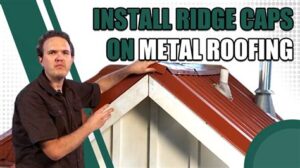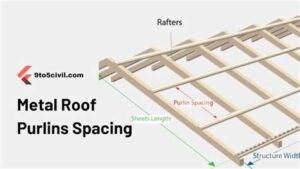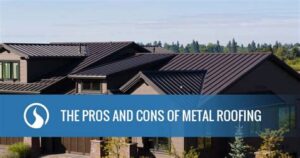10 Things You Didn’t Know About Metal Roof Cost Estimator
When it comes to planning a metal roofing project, understanding costs can be a daunting task. Many homeowners and contractors find themselves bewildered by the myriad of factors that can influence metal roof pricing. Enter the Metal Roof Cost Estimator—a vital tool designed to simplify this process. In this article, we’ll delve into the ins and outs of the estimator, revealing key inputs you should consider and the critical factors that impact your overall budget. From installation nuances to long-term returns on investment, we’re here to provide you with insightful knowledge that can make your roofing decisions clearer and more effective. Prepare to uncover ten essential insights about the Metal Roof Cost Estimator that could change the way you approach your next roofing project.
Understanding Metal Roof Cost Estimator Inputs
A metal roof cost estimator is a valuable tool that provides insight into the expected expenses related to installing a metal roofing system. To get an accurate estimate, several key inputs should be considered:
- Roof Size: The total square footage of the roof is a primary factor. Larger roofs require more materials and labor, directly impacting the overall cost.
- Material Type: Different types of metal, such as steel, aluminum, or copper, come with varying price points. Each material also has its own lifespan and durability, which can affect long-term costs.
- Roof Slope: The pitch or slope of your roof can influence installation difficulty. Steeper roofs may require additional safety measures and specialized equipment, increasing labor costs.
- Geographic Location: The cost of labor and materials can vary significantly by region. Areas with a high cost of living often see increased installation costs.
- Existing Roof Condition: If there is an existing roof that needs to be removed, this will add to the overall project cost. Assessing the current condition is crucial during the estimation process.
- Installation Complexity: Roofs with multiple facets, dormers, or unique architectural features may require more complex installation techniques, resulting in higher labor fees.
- Additional Features: Optional elements such as insulation, ventilation, and materials for flashing or trim can add to the total estimate. Consider these enhancements when budgeting.
- Permitting Costs: Depending on your locality, you may need specific permits before installation can begin, which can introduce additional fees to the project.
- Seasonal Considerations: Costs can fluctuate depending on the season. For instance, demand tends to rise in warmer months, potentially leading to higher prices.
- Professional Labor vs. DIY: Choosing to hire professionals instead of attempting a DIY installation can significantly impact costs, both for labor and potential materials wastage.
Understanding these inputs when utilizing a metal roof cost estimator will ensure you have a comprehensive view of the potential expenses involved, helping you to make informed decisions and maintain your budget effectively.
Key Factors Influencing Metal Roof Installation Costs
When estimating the cost of a metal roof, several key factors come into play that can significantly impact your overall budget. Understanding these elements will not only help you make informed decisions but also assist in managing expectations during the installation process.
- Material Type: The choice between different metal materials, such as steel, aluminum, or copper, greatly affects the cost. Higher-end materials like copper provide long-lasting benefits but come at a premium price.
- Roof Size and Complexity: The larger and more complex your roof design, the higher the cost will typically be. Features such as slopes, multiple levels, and additional architectural elements add to labor and material costs.
- Geographical Location: Installation costs can vary by region due to labor rates and availability of materials. Areas with a higher cost of living may experience elevated expenses for metal roof installation.
- Installation Method: The chosen method of installation can also influence costs. For instance, standing seam roofing tends to be more expensive compared to corrugated panels due to the complexity of the installation.
- Labor Costs: Hiring experienced contractors can ensure quality installation, but it may also increase costs. Always compare quotes from multiple installers to get the best deal without compromising on quality.
- Additional Features: Things like insulation, underlayment, and ventilation systems can add to your overall cost. While these features may initially increase the budget, they can save money on energy bills in the long run.
- Local Regulations: Building codes and regulations may require specific materials or installation practices, potentially impacting costs. Familiarize yourself with local requirements before proceeding.
- Seasonal Considerations: Scheduling your installation during peak seasons can lead to higher labor costs. If possible, consider off-peak times for potentially lower quotes.
By evaluating these 10 things that influence metal roof installation costs, you can better prepare your budget and approach the project with confidence.
How to Analyze Estimates for Metal Roof Projects
When reviewing estimates for metal roof projects, it’s essential to meticulously evaluate each aspect to ensure a sound investment. Here are some key steps to follow:
By analyzing estimates with these components in mind, you’ll be better equipped to make informed decisions about your metal roof project, ensuring you stay within your budget while securing the best value. Remember, understanding these 10 things can significantly influence your roofing investment.
10 Things That Impact Your Metal Roof Budget
When planning to install a metal roof, it’s essential to understand the various factors that can significantly influence your overall budget. Here are 10 things you should consider that might affect the cost of your metal roofing project:
- Type of Metal: The choice of metal can drastically affect the price. Aluminum, steel, copper, and zinc are commonly used materials, and their costs vary greatly.
- Roof Size: The larger the roof, the more materials you will need. Your roof’s size and pitch can subsequently influence labor costs as well.
- Roof Design and Complexity: A simple, flat roof is generally cheaper to install than a roof with multiple slopes, valleys, or other architectural features.
- Labor Costs: Regional labor rates can vary, so where you live can significantly affect the total cost of installation.
- Permits and Codes: Ensure compliance with local building codes and regulations. Costs for necessary permits can impact your budget.
- Existing Roof Condition: If your old roof needs to be removed or if repairs are required, this can add to your expenses.
- Insulation and Ventilation: Proper insulation and ventilation systems can raise upfront costs but lead to energy savings in the long run.
- Accessories and Features: Additional items such as ridge caps, flashing, and gutters can contribute to the final price of the roofing system.
- Warranties and Maintenance: Higher-quality materials often come with longer warranties, which can add to the initial investment but provide peace of mind.
- Timing and Seasonality: Seasonal demand can inflate prices. Scheduling your roofing project during off-peak months may lead to cost savings.
Considering these factors can help you create a more accurate budget for your metal roofing project. Keeping an eye on these 10 things could help optimize your expenses and ensure a successful outcome.
Evaluating the Returns of Investing in Metal Roofing
When considering a new roof, the financial implications are paramount. Investing in a metal roof can initially seem daunting due to its higher upfront costs compared to traditional roofing materials. However, evaluating the returns of investing in metal roofing reveals significant long-term benefits that often outweigh the initial expense.
One of the primary advantages of metal roofing is its remarkable durability. Metal roofs can last 40-70 years, depending on the material, which means homeowners can avoid the costs associated with frequent repairs or replacements often required with asphalt shingles and other roofing types. Over time, this durability translates to substantial savings in maintenance and replacement expenses.
Metal roofing also offers energy efficiency benefits. With reflective properties, metal roofs can help reduce cooling costs in warmer months by reflecting solar heat away from your home. This feature can lead to energy savings of up to 25% on cooling bills, further enhancing the return on investment.
Another factor to consider is the potential impact on property value. Homes with metal roofs can attract more buyers and command higher resale prices, as this aesthetic appeal and longevity are often viewed as premium features. According to studies, homeowners can expect to recoup approximately 10% to 15% of their investment when selling their home with a metal roof.
Additionally, metal roofs are often eligible for insurance discounts due to their fire-resistant properties and long lifespan. This can result in lower premiums over time, contributing to the overall return on your investment.
While the 10 things that make metal roofing more expensive upfront may seem significant, the long-term returns—through savings in repairs, energy costs, increased home value, and insurance discounts—show that investing in a metal roof can be a financially sound decision. Evaluating these factors can help homeowners understand the true value of their investment and make informed decisions regarding their roofing needs.
Frequently Asked Questions
What factors influence the cost estimation of a metal roof?
Various factors influence the cost estimation of a metal roof, including the type of metal used, the complexity of the roof design, labor costs, geographical location, and any additional features such as insulation or specialized coatings.
How much does a metal roof typically cost compared to traditional roofing materials?
On average, a metal roof can cost more upfront than traditional roofing materials like asphalt shingles; however, its long lifespan and lower maintenance costs can lead to savings over time.
Are there different types of metal roofing, and do they affect cost?
Yes, there are different types of metal roofing, including steel, aluminum, copper, and zinc. Each type has distinct costs associated with materials, durability, and aesthetic appeal.
How can a homeowner ensure accuracy in their metal roof cost estimation?
Homeowners can ensure accuracy in their metal roof cost estimation by getting multiple quotes from reputable contractors, considering all aspects of the project, and using online cost estimation tools geared towards metal roofing.
What are some hidden costs associated with installing a metal roof?
Hidden costs may include structural reinforcements, disposal of old roofing, permits required by local laws, and costs related to unforeseen repairs or adjustments during installation.
Is it possible to install a metal roof over an existing roof, and how does that affect costs?
Yes, it is often possible to install a metal roof over an existing roof, which can save on demolition costs; however, it may increase material costs due to additional underlayment and potential structural assessments.
What financing options are available for homeowners looking to invest in a metal roof?
Homeowners may have access to various financing options, such as personal loans, home equity loans, specific contractor financing programs, or government incentives for energy-efficient home improvements.





